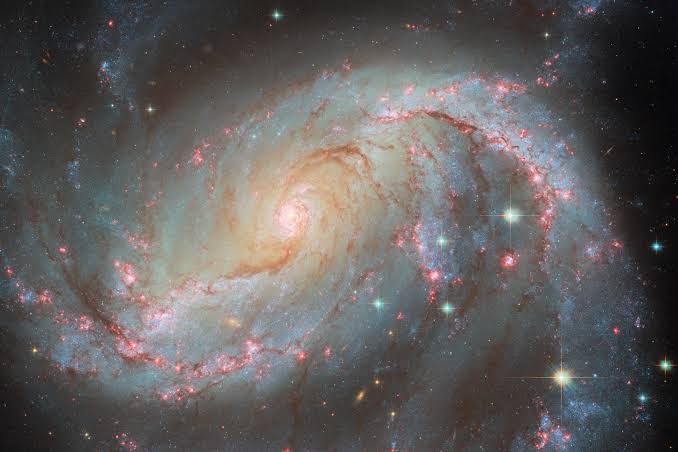Hubble’s latest image captures the dazzling spiral galaxy NGC 6000, lying 102 million light-years away in Scorpius. Its golden core and bright blue arms reveal a striking contrast between old, cool stars at the center and young, hot stars in the outskirts.
The Stellar Story Told by Color
This spiral galaxy features a bright golden core surrounded by shimmering blue arms. These vivid hues reveal differences in the ages, sizes, and temperatures of its stars. Near the center, most stars are older and smaller, glowing with a warmer, yellowish light.
Smaller stars are cooler than large, massive ones, and although it may seem surprising, cooler stars appear redder while hotter ones shine blue. Along NGC 6000’s sweeping arms, clusters of young, massive stars radiate a striking blue light, marking areas of active star formation.
Tracing the Echoes of Supernovae
To capture this image, Hubble observed NGC 6000 as part of a survey of galaxies that have recently hosted supernova explosions. This particular galaxy has witnessed two in recent years: SN 2007ch (in 2007) and SN 2010as (in 2010).
Hubble’s highly sensitive instruments allow scientists to detect the lingering glow from these events long after the explosions fade. Studying this faint light helps astronomers estimate the original masses of the stars that exploded and determine whether those stars once had close companions.
By zooming in on the right side of the galaxy’s disc in this image, you may see something else yellow and blue: a set of four thin lines. This is an asteroid in our Solar System, which was drifting across Hubble’s field of view as it gazed at NGC 6000.
The four streaks are due to different exposures that were recorded one after another with slight pauses in between. These were combined to create this final image. The colors appear this way because each exposure used a filter to collect only very specific wavelengths of light, in this case, around red and blue.







